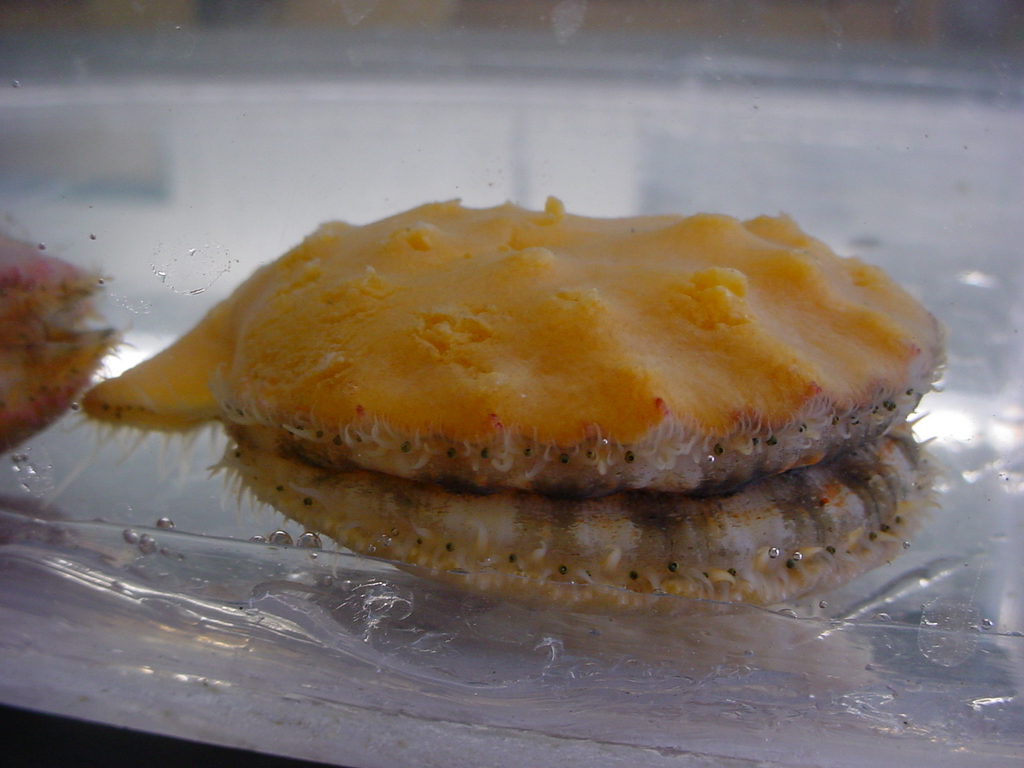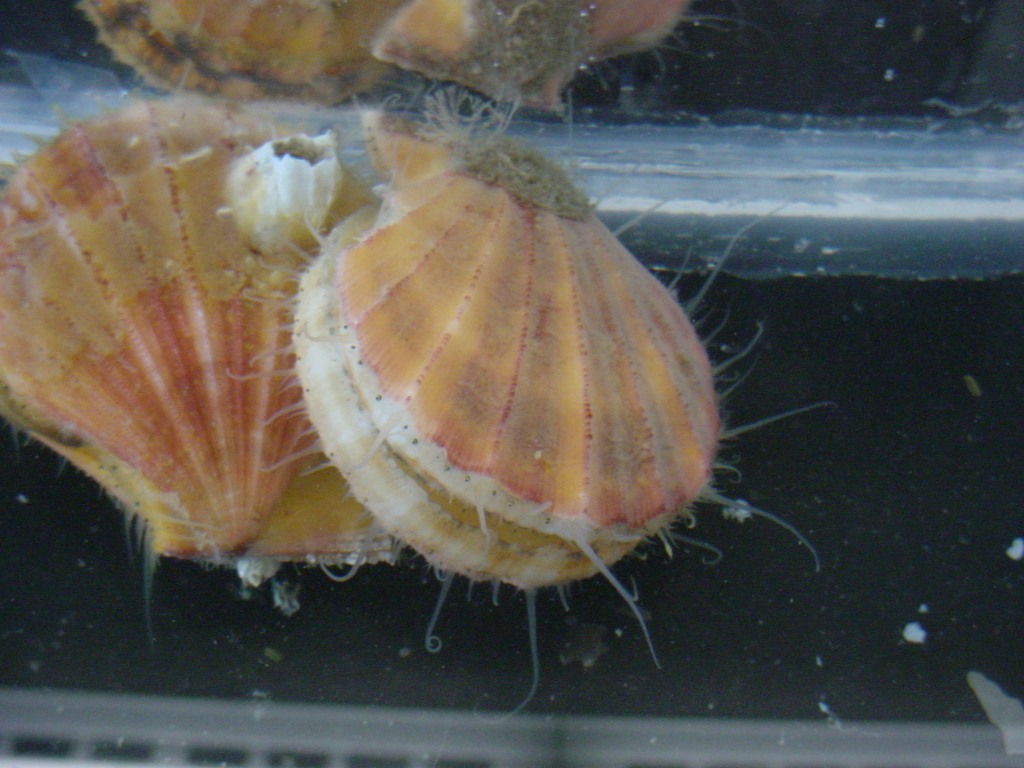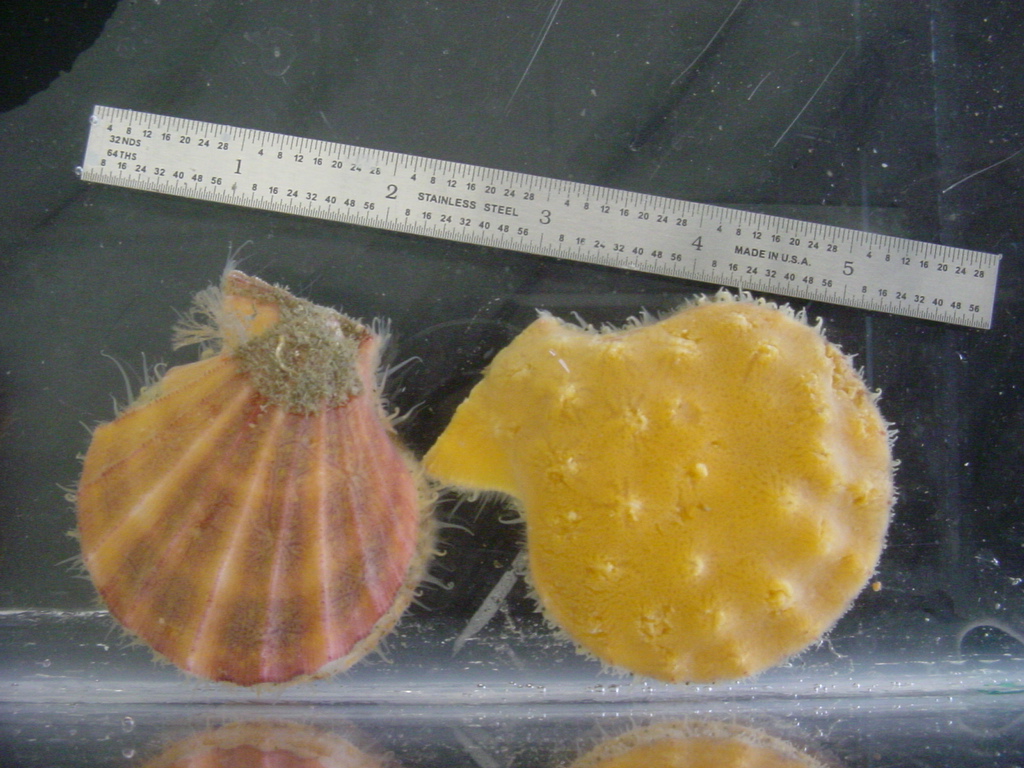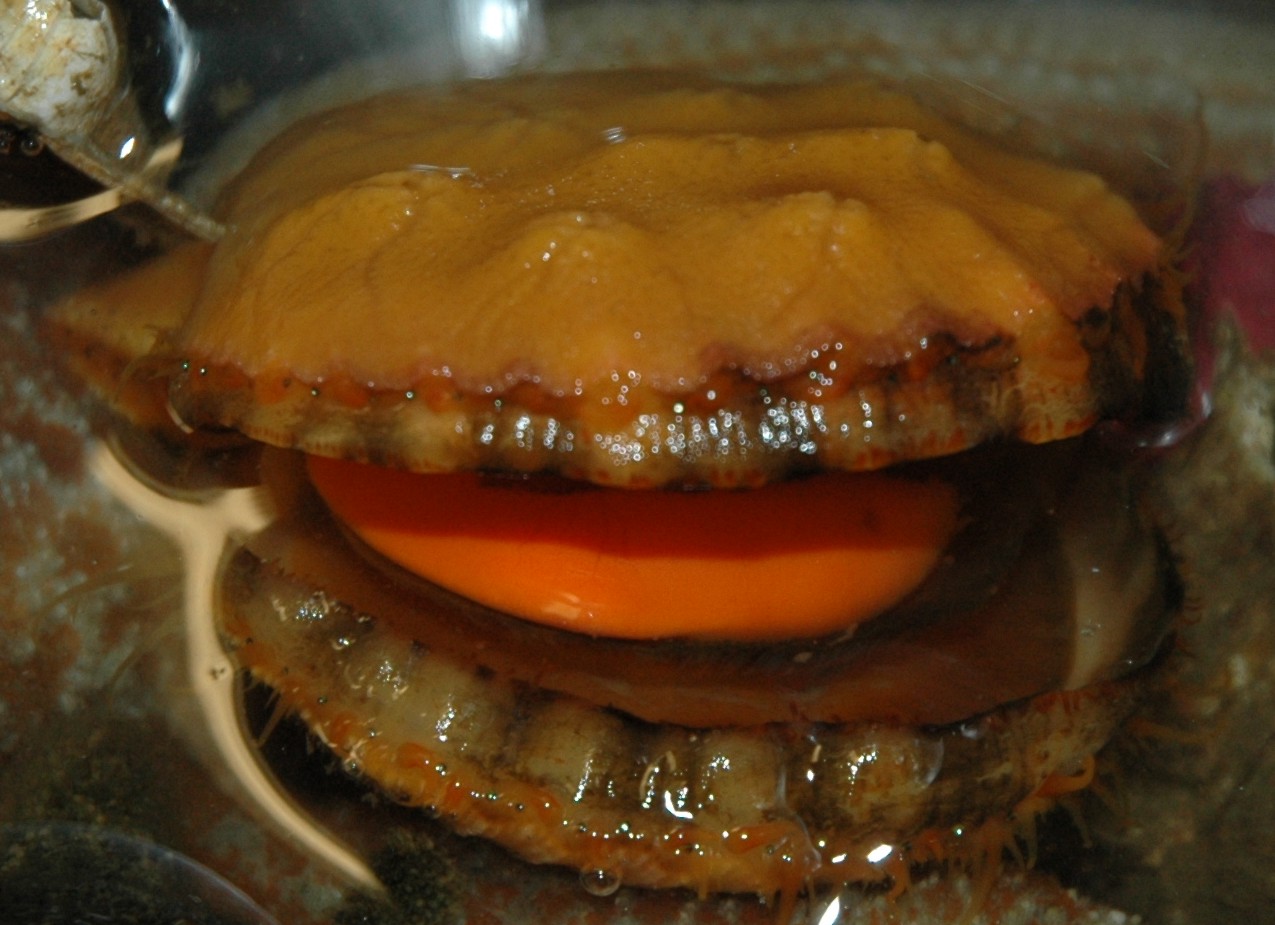Chlamys (Chlamys) hastata (Sowerby, 1843)Common name(s): Spiny scallop, Pink scallop, Spear scallop, Spiny pink scallop |
|
| Synonyms:
Pecten hericius Chlamys hericius |
 |
| Phylum Mollusca
Class Bivalvia Subclass Pteriomorpha Order Ostreoida Suborder Pectinina Family Pectinidae |
|
| Chlamys hastata from 15 m depth at Sares Head, Rosario Bay. Covered with Myxilla encrustans sponge | |
| (Photo by: Dave Cowles, June 2005) | |
How to Distinguish from Similar Species: Other similarly-shaped and ridged species, such as Chlamys rubida, do not have the prominent spines on their ribs
Geographical Range: Gulf of Alaska to San Diego, CA
Depth Range: Mostly subtidal; in our area they seem to predominate at shallower depths and in rockier areas than does Chlamys rubida. Sometimes also low intertidal or on floats.
Habitat: Mostly subtidal, Mainly on sandy or shelly hash bottoms; also among boulders
Biology/Natural History: Very common in waters near Rosario. Often attach to the bottom by a few byssal threads. Nearly always lie with the left valve upward. Their left valve is usually more brightly colored than is the right valve. Are almost always covered by the encrusting sponge Myxilla incrustans (orange or yellow); less often by the brown or purple sponge Mycale adherens. These two sponges are found only on scallops. The symbiosis is likely mutualistic. If one of the major predators of the scallop, Evasterias troschelii, encounters the scallop (and the scallop does not swim away) it often turns away if it touches the sponge; likely in response to some secretion or to the spicules from the sponge. The sponge also appears to make it more difficult for the seastar's tube feet to adhere to the scallop. If the sponge is removed from the scallop and the scallop is prevented from swimming, it is readily captured by the seastar. The scallop will also swim from predators of the sponge, such as Archidoris spp, so the sponge is benefited as well. The swimming scallop may also help carry the sponge into areas with clean water and good currents, nd help prevent fouling of the sponge. Chlamys hastata is sometimes parasitized by the ectoparasitic Clam Sucker snail Odostomia columbiana. The foot is highly reduced and there are no siphons. The edge of the mantle is lined with small tentacles and several hundred beautiful blue eyes. These eyes can detect light and dark but cannot form an image. Filter feeds about 4 liters of water per gram per hour. Several seastars are predators of this species, including Pycnopodia helianthoides and Crossaster papposus. The scallops have a well-developed escape response of clapping the valves together like a pair of false teeth and swimming away by jet propulsion (contrary to what you might expect, the jet exits the dorsal side of the scallop, near the hinge). Click here for an .MPG file of the escape. Sexes are separate. The ovary is orange, testes are white. Veligers form about 50 h after fertilization. Form annual growth rings in January or February, live about 6 years in southern BC.
| Return to: | |||
| Main Page | Alphabetic Index | Systematic Index | Glossary |
References:
Dichotomous Keys:Kozloff 1987, 1996
Flora and Fairbanks, 1966
Scott and Blake, 1998
General References:
O'Clair
and O'Clair, 1998
Kozloff,
1993
Niesen,
1997
Scientific Articles:
Bloom, S., 1975. The motile escape response of a sessile
prey:
a sponge-scallop mutualism. J. Exp. Mar. Biol. Ecol. 17:
311-321
Burns, D. and B. Bingham, 2002. Epibiotic sponges on the scallops Chlamys hastata and Chlamys rubida: increased survival in a high-sediment environment. J. Mar. Biol. Assn. U.K. 82: 961-966
Donovan, D. B. Bingham, H. Farren, R. Gallardo, and V. Vigilant, 2002. Effects of sponge encrustation on the swimming behaviour energetics and morphometry of the scallop Chlamys hastata. J. Mar. Biol. Assn. U.K. 82: 469-476
Farren, H.M. and D. A. Donovan, 2007. Effects of
sponge and barnacle
encrustation on survival of the scallop Chlamys hastata.
Hydrobiology
592: 225-234
General Notes and Observations: Locations, abundances, unusual behaviors:
Abundant near Rosario.
When these scallops are kept in running seawater tanks the encrusting
sponges die and slough off within a few weeks. The scallops
live
much longer.
Scallops have a rapid and vigorous escape response when they are near or are touched by predatory seastars such as Pycnopodia helianthoides. Click This link to download a .MPG file showing a scallop escaping from Pycnopodia. MPG file by Dave Cowles, July 2005

When not disturbed, this species opens up and extends long tentacles.

Some carry sponges and some do not.

An individual feeding underwater. Photo by Jim Nestler, July
2005

This individual is gravid with orange eggs.
Authors and Editors of Page:
Dave Cowles (2005): Created original page